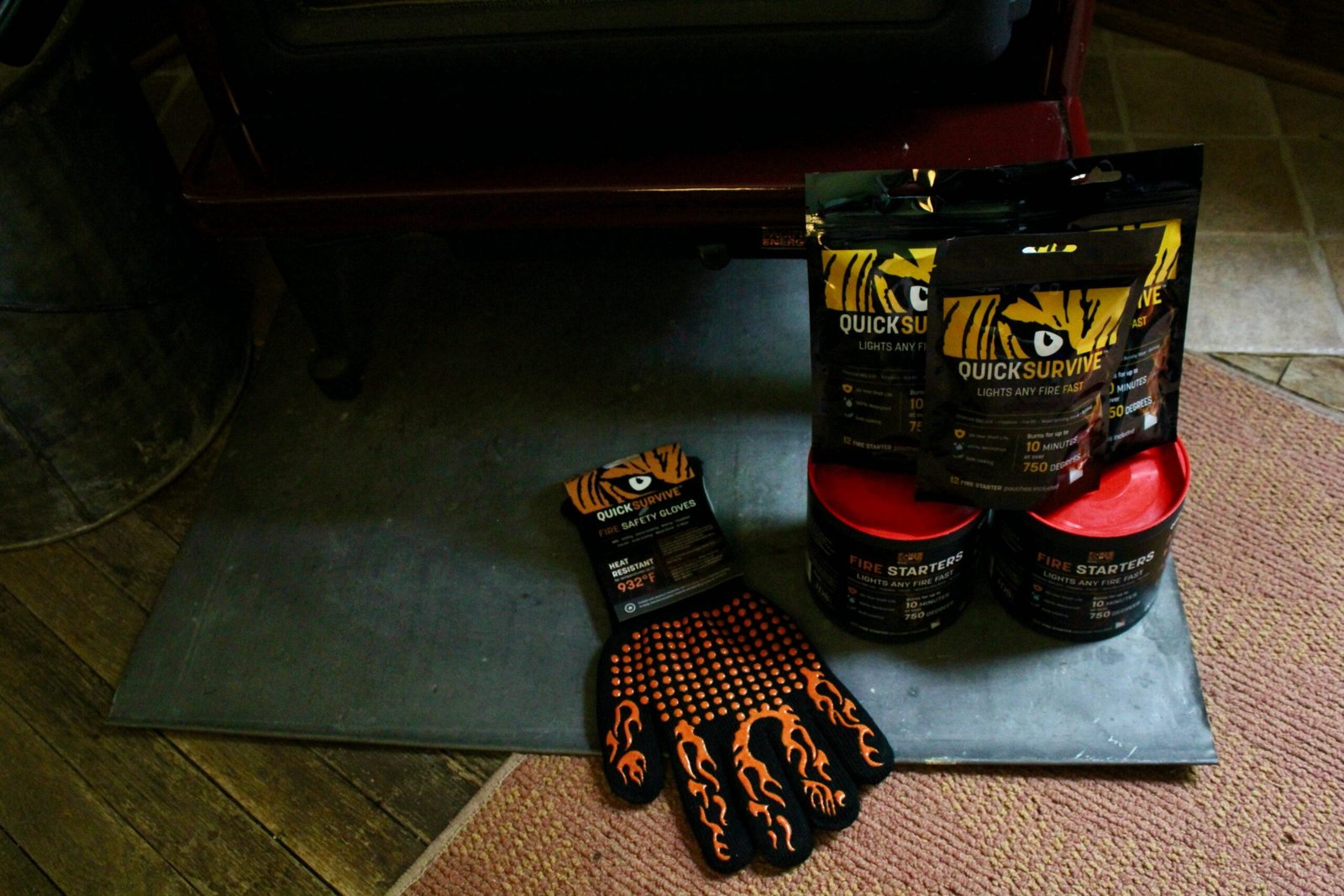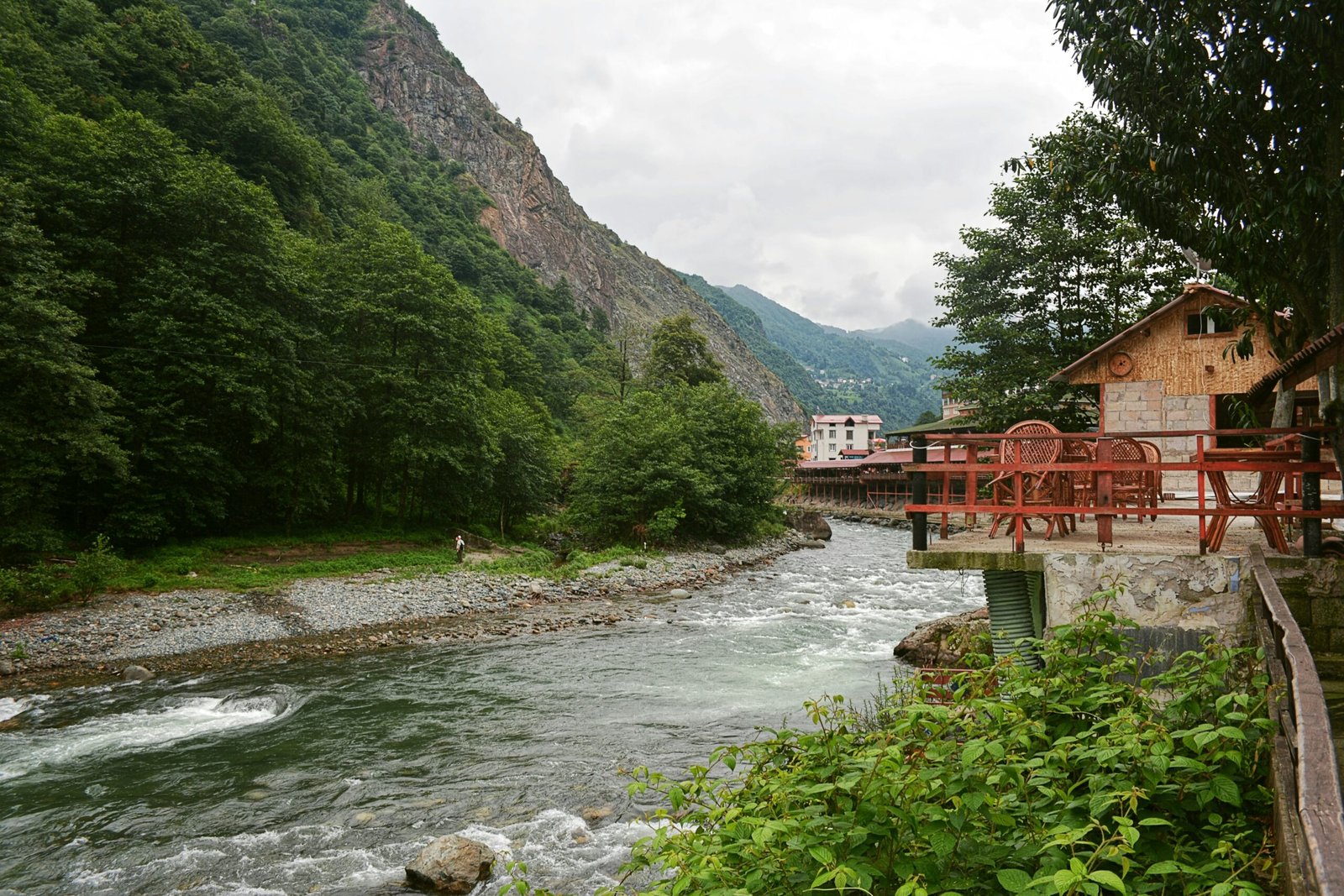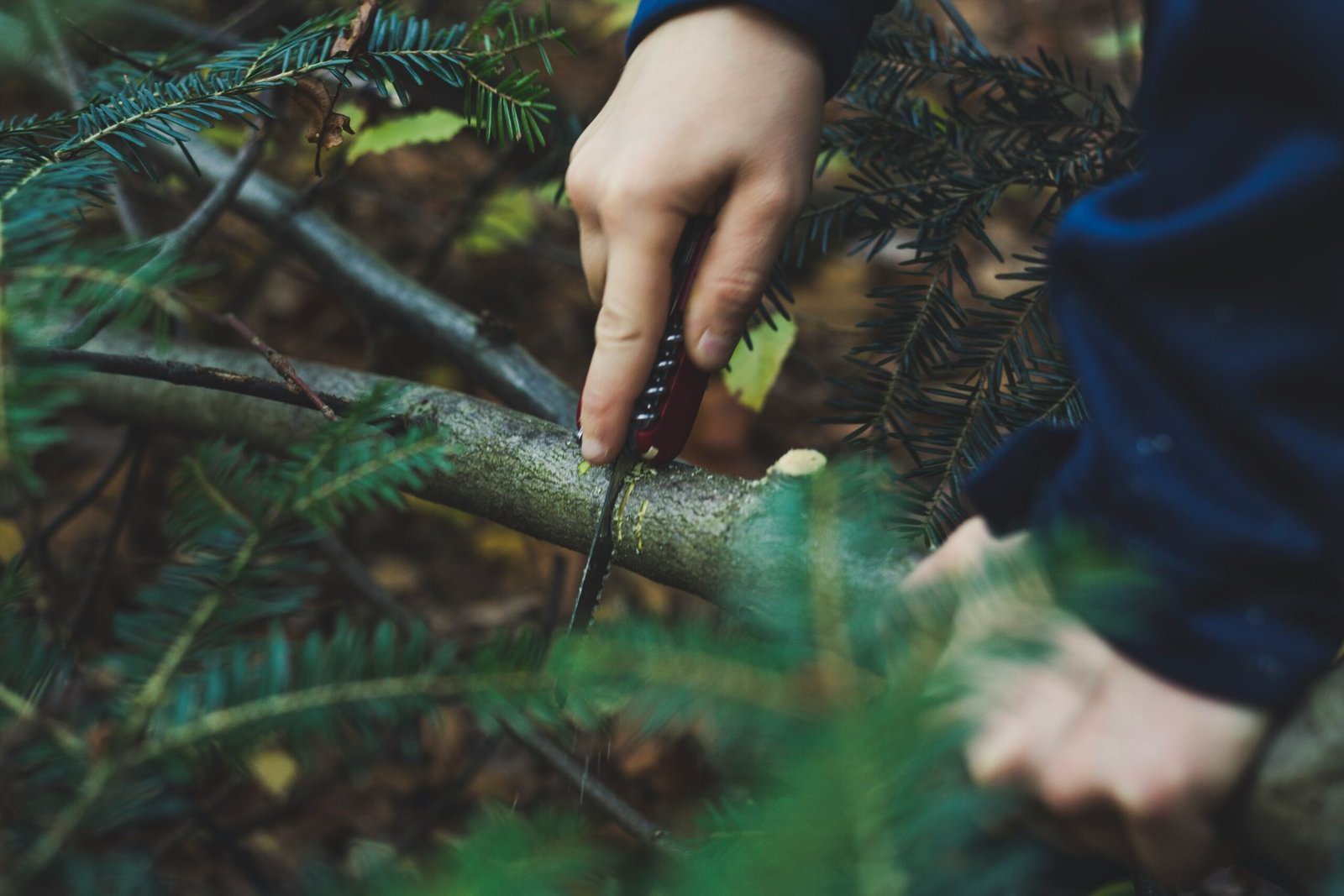
Introduction to Fire Starting Techniques
Starting a fire without traditional means such as matches or lighters is a vital skill that can prove invaluable in various situations, from outdoor adventures to survival scenarios. The ability to create and maintain a fire can significantly enhance one’s chances of survival when faced with unexpected circumstances, providing warmth, a means to cook food, and a method for signaling for help. Fire not only serves essential functions but also plays a psychological role in fostering a sense of security and comfort.
There are myriad techniques for initiating a fire without standard ignitors, each requiring different tools and methods. Some of these techniques include the use of a fire starter, flint and steel, and friction-based methods such as bow drills and hand drills. Understanding the diverse range of fire-starting methods allows individuals to be prepared for various environments, whether they are exploring forests, deserts, or chilly mountainous regions. The ability to adapt to the natural surroundings and utilize available resources can greatly influence one’s success in fire building.
Moreover, knowledge in fire starting fosters resourcefulness, encouraging individuals to think creatively and utilize materials found in their environment. For instance, one can employ dry leaves, twigs, and other combustible materials to create a fire, highlighting the importance of observation and awareness of one’s surroundings. Safety in fire building cannot be overstated; understanding the principles of fire dynamics and ensuring proper precautions can prevent accidents and injuries. Preparation and practice are crucial, as failure to start a fire can lead to dire consequences in emergencies. Therefore, cultivating these skills not only improves one’s survival capabilities but also enriches outdoor experiences, providing a deeper appreciation of nature and self-reliance.
Understanding Fire Basics
To successfully start a fire without matches or lighters, it is imperative to grasp the fundamental principles governing fire. Central to this understanding is the fire triangle, which consists of three critical elements: heat, fuel, and oxygen. These components interact in a specific manner to create and sustain combustion. Heat is the energy required to elevate the temperature of the fuel to its ignition point. Fuel can be any combustible material, including wood, leaves, or even synthetic materials, while oxygen is essential as it supports the combustion process. When all three components are present and adequately balanced, a fire can ignite and maintain itself.
A thorough comprehension of the fire triangle not only enhances your ability to start a fire but also provides insight into controlling it effectively. For instance, when attempting to create a sustainable fire, the right type of fuel and the right amount of oxygen must be ensured. Too much or too little oxygen can lead to inefficient burning, resulting in smoke and minimal heat generation. Conversely, the right amount of heat will help in achieving optimal combustion, allowing the fire to flourish and serve its intended purpose.
Furthermore, the type of fire you aim to create is vital, as different situations necessitate different fire characteristics. For warmth, a larger, more robust fire may be required to generate adequate heat, especially in cold conditions. If the objective is cooking food, a controlled fire with a steady, moderate flame is more suitable. In emergency situations where signaling for help is necessary, the fire should be bright and smoky to draw attention. By understanding these variations and their specific requirements, you can later apply this knowledge effectively when employing alternative fire-starting methods without traditional tools.
Essential Fire-Making Tools
Starting a fire without the convenience of matches or lighters requires specific tools and materials that can initiate combustion. Understanding these essentials not only enhances your chances of successfully igniting a fire but also ensures that the process is safe. This section will examine both natural and man-made options that can assist in fire-starting efforts.
One of the most traditional methods involves the use of flint and steel. This method harnesses the striking of steel against flint to produce sparks capable of igniting tinder. While this technique can take practice, it is highly reliable when the right conditions are met. To improve your chances of success, it is crucial to have dry tinder readily available, as it greatly increases the likelihood of spark ignition.
Another valuable tool is a fire starter, which can be made from various materials such as magnesium or having a cotton ball soaked in petroleum jelly. These fire starters accelerate the ignition process and provide a more extended burn time, making it easier to catch kindling alight. Additionally, collecting sticks and dry grass serves as vital components in building a fire. Small twigs, known as kindling, should be gathered and arranged in a teepee or crisscross pattern to facilitate airflow and fuel the flame.
For gathering these essential materials, natural resources like dead leaves, bark, or other dried plant debris are particularly effective as tinder sources. However, caution should be exercised when foraging for these elements to avoid damaging living plants and to minimize environmental impact. Remember to always practice fire safety, ensuring you have adequate control over your fire and never leaving it unattended. By carefully selecting and gathering these tools, you will be better equipped to start a fire without conventional means.
Friction-Based Fire Starting Methods
Friction-based fire starting methods are among the oldest techniques utilized by humans to create fire without modern conveniences such as matches or lighters. Mastering these methods requires practice, patience, and a solid understanding of the right materials and techniques. This section will provide an overview of three main friction-based techniques: the bow drill, hand drill, and fire plough.
The bow drill is a widely recognized method that combines a flexible bow with a spindle and a fireboard. To begin, select a softwood for the fireboard and a harder wood for the spindle. Creating a notch in the fireboard will help collect the ember generated by friction. The bow is then wrapped around the spindle, allowing for quick rotational movement. By applying downward pressure on the spindle while moving it back and forth using the bow, friction will create heat, leading to smoldering dust that can be transferred to tinder.
Another effective technique is the hand drill, which utilizes a similar approach but without a bow. Here, one must rotate a dry spindle between the palms while pressing it onto a fireboard. Similar to the bow drill, a notched fireboard is required. The hand drill requires greater physical effort and dexterity but can yield results if performed correctly. Selecting dry, softwood spindles and fireboards significantly increases your chances of success.
The fire plough is another ancient technique, requiring a stick and a grooved surface made from a hard piece of wood. By pushing the stick back and forth, the friction produced can create fine wood shavings, which when accumulated can catch fire. Choosing the right types of wood is critical; softer wood will ignite more efficiently when combined with the friction produced from a harder counterpart.
In all these methods, persistence plays a vital role. Each technique can take time to master, but with practice and the right selection of materials, anyone can cultivate the ability to start a fire without the aid of matches or lighters.
Using Natural Elements for Fire Ignition
When it comes to starting a fire without traditional tools like matches or lighters, one can utilize various natural elements effectively. Two prominent methods include harnessing sunlight and employing simple chemical reactions. Understanding the science behind these methods is essential for successful ignition.
One of the most accessible techniques involves using a magnifying glass or a glass bottle. Both tools can concentrate sunlight into a focused beam. To use a magnifying glass, position it between the sun and a suitable tinder material, such as dry leaves or bark. The goal is to focus the sunlight onto a specific point on the tinder, generating enough heat to create embers. It is optimal to do this when the sun is most direct, usually around midday, as this will produce the hottest rays. In the absence of a magnifying glass, a clear plastic bottle filled with water can serve a similar purpose. The curvature of the bottle can concentrate sunlight when focused correctly.
Another effective method employs steel wool and a battery. This technique relies on the conductive properties of steel wool combined with the electrical current from a battery. By connecting the battery terminals with the steel wool, the conductivity causes the wool to heat up and ignite. It is crucial to use fine steel wool for this method, as it ignites more readily than coarser varieties. Once ignited, the glowing steel wool can be transferred to a prepared nest of dry tinder material to establish a sustained fire. It is recommended to practice these methods in a safe environment to understand the nuances of each technique better and to optimize your chances of success.
Creative Fire Starting Techniques
Starting a fire without the conventional means of matches or lighters can seem daunting, yet there are several innovative techniques that can be employed using everyday materials. One such method involves the use of a soda can. By taking a clean aluminum soda can and polishing one side with a cloth or any abrasive material, you can create a reflective surface. This shiny area can concentrate sunlight, effectively creating enough heat to ignite tinder, such as dry grass or paper.
Another efficient technique is the rock and steel method. This primitive but effective approach requires a piece of high-carbon steel and a hard rock, typically flint or quartz. By striking the steel against the rock, small sparks are produced. To maximize the chances of ignition, it is essential to have a proper tinder bundle prepared nearby. This can be made from dry leaves, grass, or even fur—anything that can catch a spark quickly will suffice. Practicing the striking technique will enhance efficiency, increasing the number of sparks generated.
Additionally, utilizing pine resin offers another alternative for starting a fire. Pine resin is a sticky substance that can be extracted from pine trees and serves as a natural fire starter due to its flammable properties. To use this technique, gather resin-coated wood, such as pine cones or bark, and form a small tinder pile. Then, apply sparks from the rock and steel method or another fire starter to the resin. Once ignited, the resin burns hot and long, making it an excellent catalyst for larger wood to catch fire.
These creative fire-starting techniques emphasize the versatility and resourcefulness needed in outdoor settings. By understanding and practicing these methods, individuals can be better prepared for various scenarios where traditional igniting tools are unavailable.
Building and Maintaining Your Fire
Building a fire without matches or lighters requires not only skill but also a strategic approach to fire structure, which significantly affects the efficiency and sustainability of your flame. Various structures can be employed to create a strong foundation for your fire, each catering to different needs and environments. The teepee structure is particularly advantageous for quick combustion. To create a teepee fire, arrange tinder in the center, then lean kindling sticks against each other around the tinder, creating a cone shape. This design allows for optimal airflow, which is crucial for igniting your fire effectively.
An alternative structure is the log cabin formation, which involves stacking logs in a square arrangement around the tinder and kindling. This method not only provides a more stable base but also allows for a sustained burn with good airflow. Another option is the lean-to fire structure, which consists of a sturdy support stick driven into the ground, with kindling layered against it at a right angle. This structure is particularly useful for windy conditions, as it shields the flame while promoting airflow.
Airflow is a fundamental aspect of maintaining a fire once it has started. A steady supply of oxygen is essential for combustion, so ensure that your fire is built in a way that allows air to circulate freely around the fuel. Additionally, consider the types of fuel you are using. Hardwoods, such as oak or hickory, burn longer and hotter, making them ideal for sustained heat, whereas softwoods like pine ignite quickly but burn out faster. Managing the size and arrangement of your fuel will significantly determine how long and effectively your fire burns.
To keep your fire blazing, regularly add fuel as needed and adjust the structure to enhance airflow. By understanding these foundational principles of fire building and maintenance, you can ensure a successful and enjoyable fire experience.
Fire Safety and Precautions
When embarking on the task of starting a fire without matches or lighters, it is imperative to prioritize fire safety and precautionary measures. Whether in a wilderness environment or a survival situation, understanding the risks associated with fire is crucial to prevent accidents and wildfires. The first step in ensuring safety is to choose an appropriate location for your fire. Select a flat, open area away from overhanging branches, dry grasses, and other flammable materials. Establish a fire ring using rocks to contain the fire, thereby reducing the risk of it spreading.
To further safeguard against wildfires, it is advisable to check local regulations regarding open flames, particularly during dry seasons or in regions prone to wildfires. Familiarize yourself with the Fire Weather Index if available, as this will inform you about the current fire danger levels in your area. Moreover, always keep firefighting tools nearby, such as a bucket of water, sand, or a fire extinguisher, to address any unexpected flare-ups immediately.
In the event of an emergency, knowing how to react is vital. If the fire begins to spread uncontrollably, maintain a safe distance and take appropriate action to mitigate the risks. Alert others nearby, evacuate the area if necessary, and call emergency services to report the incident. Additionally, it is important to ensure that the fire is completely extinguished after use. Douse the fire with water, stir the ashes, and repeat this process until the area is cool to the touch. This method not only ensures safety but also practices the principle of leaving no trace, promoting environmental responsibility.
In summary, adhering to appropriate fire safety measures and precautions is essential when starting and maintaining a fire. By ensuring a safe setup and being responsive in emergencies, one can enjoy the benefits of fire without compromising safety or the environment.
Conclusion: Mastering the Skill of Fire Starting
Developing the ability to start a fire without the reliance on matches or lighters is an invaluable skill that can significantly enhance your outdoor experiences and survival strategies. Fire serves multiple essential purposes: it provides warmth, aids in cooking food, serves as a signal for help, and offers protection against wildlife. Consequently, mastering fire-starting techniques can elevate your preparedness for both leisurely camping trips and emergencies in the wilderness.
Practicing these techniques, such as using flint and steel, friction-based methods, or even solar ignition, helps build your confidence and familiarity with each method. Each approach has its intricacies, and honing your skills through repeated practice will ensure that you are well-prepared when faced with challenging conditions or unexpected situations. It is recommended to dedicate time to practice in various environments, allowing you to adapt and refine your techniques based on the materials and conditions you encounter.
For those interested in further expanding their knowledge, numerous resources are available, including survival workshops, instructional videos, and books focused on wilderness survival skills. Joining local outdoor clubs or forums can also provide opportunities to connect with experienced individuals who can share practical insights and encourage you in your fire-starting endeavors. Engaging with the community can offer additional support and resources, making the learning process both enjoyable and informative.
Ultimately, mastering the art of starting a fire without matches or lighters is not merely an enjoyable challenge; it is a fundamental skill that enhances safety and self-sufficiency during outdoor adventures. By continuously practicing and seeking out additional resources, you will be well-equipped to face the elements confidently and responsibly.


